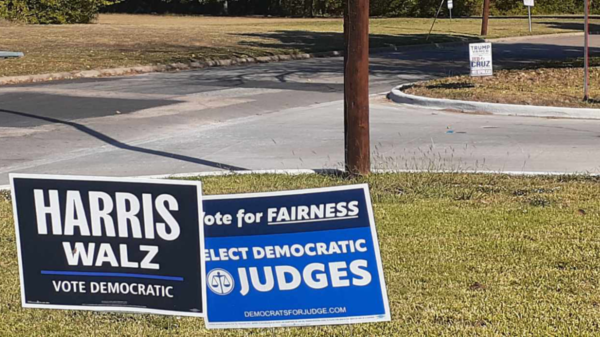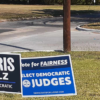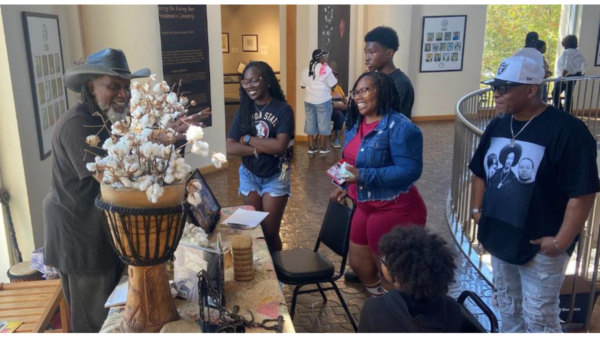By Norma Adams-Wade

Weather. Photo: Smithsonian magazine
Learn something new every day.
I knew that Malcolm X (El-Hajj Malik El-Shabazz), Cab Calloway, my Dad, and many Black men in the 1930s and ‘40s wore zoot suits.
I was stunned recently to learn the other, deep social and racist side of the zoot suit story.
Mobs of several thousand off-duty military soldiers and their civilian supporters carrying clubs attacked zoot suit wearers, of- ten publicly disrobing them, over 10 days in the streets of Los Angeles in 1943 during World War II. The attacks attracted wide-spread attention and became known as the zoot suit riots. I will explain later what motivated the attackers.
One of the distinct and startling parts of the story was that during and after the riots, the LA City Council issued a ban against zoot suits that they labeled unpatriotic, wasteful, and symptomatic of an undesirable subculture not supporting the war effort.
I’ve always only known of zoot suits as a cool (or should I say “dope”) fashion statement of men who display style and swagger.
But I learned something new when I ran across an online reference explaining why the LA City Council restricted the suits. Evidence varies about the strength and effectiveness of the ban.
I was just thinking…the hu- man capacity to do dumb things that at the time seem sensible never ceases to amaze.
By the way, I would have shown you a photo of my then-hipster/hep cat dad, Frank McLeod Adams, styling a zoot suit in the 1940s, but did not have time to search through family albums to find it. Just take my word that he was “the bomb,” “fab,” “bad,” “phat,” “fine,” “nifty,” “cracking,” and “slick.”

Several designers credited, falsely or correctly, with creating zoot suits
Before I delve further into the riots, let’s talk first about the confusion over who created zoot suits. Different researchers cred- it possibly five designers. The top contender is (1) Harold C. Fox, a Jewish trumpet player from Chicago and New York whose father owned a cloth wholesale business. Others who variously have been credited by different writers are (2) Nathan “Toddy” Elkus, a Detroit clothier during the late 1930s; (3) Louis Lettes, a Memphis tailor; (4) Charles Klein and an associate (5) Vito Bagnato both of New York City.
Zoot suit features
The zoot suit was aptly de- scribed as excessive. The pants featured a high waist band, wide ballooning legs that tapered at the ankles with a cuff. The blazer jacket usually is long down to the knees and has very wide lapels, very wide shoulders, and shoulder pads. The suits were accented with extremely long chains that hooked on the waist and flowed down to about the knee and back to a pocket. Other accents for the suit were two-tone, pointed-toe, spectator zoot suit shoes, and on your head a wide-brimmed fedora or flat-top pork-pie hat sometimes with a fancy feather on the side. Cultural take-over of zoot suit On its face, it appears that Black jazz musicians and entertainers first wore the zoot suits that a Jewish clothier de- signed. Then, Brown people became more noted for wearing the hep cat attire after the bizarre Los Angeles zoot suit riots happened in June 1943 during WWII years. Latinx (you may say Mexican-Americans, Hispanics, Latinos, Chicanos) largely were targets during the riots. But as has happened throughout history, Black people will begin a tradition or cre- ate an idea and another culture will appropriate it (take it over) while the original Black creators become lost to history.

Los Angeles. Photo: The Movie Database
Here’s how the appropriation happened. The Latinx population had fallen in line with the Black community and embraced the zoot suit soon after the likes of noted “hep cat,” jive-talking night-lifer Cab Calloway gave it popular public exposure in jazz clubs and dance halls. The suit also became popular in various marginalized populations including immigrants and Jews who shared the club life, largely in Harlem and Los Angeles.
Other Black entertainers who were among the first to wear zoot suits also included
the dancing Will Mastin Trio comprised of Sammy Davis Jr., his dad Sammie Davis Sr. and close family friend and young Sammie’s “uncle” Will Mastin, saxophonist Louis Jordan, and Eddie Anderson who played the character “Rochester” on the Jack Benny television sitcom.
Still others of note who wore zoot suits included Black Muslim Malcolm X (el-Hajj Malik el-Shabazz) and Cesar Chavez who organized California Latinx farm workers.
Movies also helped promote the suit style. Parts of the classic 1943 all-Black cast movie Stormy Weather became iconic when popular cast member Cab Calloway “rocked” a white zoot suit while prancing and singing “Geechy (Geechee) Joe” at the club. Denzel Washington stole scenes wearing a red pinstripe zoot suit while portraying the title character in the 1992 movie Malcolm X based on writer Alex Haley’s book The Autobiography of Malcolm X. And Latinx culture was featured in the 1981 movie Zoot Suit featuring 1940s early Chicano culture and depicts the zoot suit riots.
Zoot suit riots…then decades later: sagging pants
Now about those riots. It’s shocking, in my opinion, that folk fought in the streets over clothing. But history tells us that’s exactly what they did. What happened was…during World War II, 1939 to 1945, zoot suits became popular in the 1930s and required voluminous amounts of cloth to create. But the government was rationing goods to support the war and resentment built up against folk who wore the style that required so much cloth.
The resentment shifted to accusations that men who wore the suits were unpatriotic and not supporting the rations. For 10 days in June of 1943, mobs of soldiers and some civilians who supported the war began attacking zoot suit wearers on the streets. The mobs, which included soldiers brandishing clubs, publicly disrobed some zoot wearers while police offered little help to the men being attacked.
That’s when the U. S. War Production Board issued a directive attempting to ban zoot suits as too extravagant and wasteful during war rationing. The directive did not hold up as a law.
Hip-Hop artists ushed in the similar sagging pants fad around the 1990s, almost a half-century after the zoot suit riots. Then around 2007, former Dallas City Councilman Dwaine Carraway attempted but failed to outlaw sagging pants through a city ordinance. About five years after that, he tried and failed again declaring sagging pants as detrimental to the positive personal development of teens and young adults.

“Long hot summer” of 1967 urban riots
The 1943 zoot suit riots and the 1967 urban riots about a quarter-century later have noticeable similarities. A common theme is subculture survival and attempts to make the best of limited resources. Rioting often results when marginalized people reach a limit to patiently waiting for their lives to improve. When ultimately it does not, chaos ensues.
The 1967 urban riots prompted U. S. President Lyndon Johnson to authorized an investigation into the causes of the widespread urban riots of 1967. The National Advisory Commission on Civil Disorders resulted in March 1968– also known as the Kerner Commission. The report largely attributed those riots to unequal access to quality of life issues for Black American urban dwellers
80 Years later, an apology
Last year in June 2023, the LA City Council approved a resolution condemning the 1943 zoot suit riots as part of Zoot Suit Heritage Week on the riot’s 80th anniversary. The LA City Council also issued an apologizing to Latinx citizens. African-Americans still are awaiting reparations and an apology for eons of slavery, Jim Crow, and discrimination.
Norma Adams-Wade, is a proud Dallas native, University of Texas at Austin journalism graduate and retired Dallas Morning New senior staff writer. She is a founder of the National Association Black Journalists and was its first southwest regional director. She became The News’ first Black full-time reporter in 1974. norma_adams_wade@yahoo.com









You must be logged in to post a comment Login